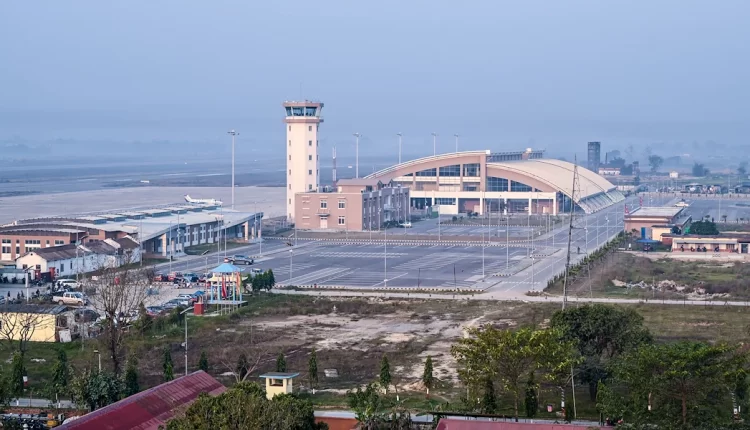Nepal’s second international airport Gautam Buddha International Airport (GBIA) nearly complete, ready for takeoff: ADB
Kathmandu: Despite challenges posed by the coronavirus disease (COVID-19) pandemic, the construction of Nepal’s Gautam Buddha International Airport (GBIA) is nearly complete.
The airport is 19 kilometers from the UNESCO World Heritage Site of Lumbini, the birthplace of Lord Buddha.
GBIA will be Nepal’s second international airport. It will also serve as an alternate for Tribhuvan International Airport in Kathmandu in the event of bad weather or other technical issues there.
“To ensure operational readiness of the communication and navigational facilities of the airport, a technical team from Thailand undertook calibration flights and flight inspections from 18-28 February 2022, including checking performance and efficiency of navigation instruments, communication, and air traffic control-related systems,” says Project Manager Pravin Neupane.
The newly built terminal, spread over 15,169 square meters, is ready to welcome passengers. Work on immigration and customs facilities is ongoing, with electrical fittings being installed in the arrival and departure halls.
GBIA’s new runway is 3,000 meters long. The existing 1,500-meter runway of the adjacent domestic airport will be used as a parallel taxiway.
The new control tower stands tall and ready with modern equipment.
Advanced navigational aids and airport lighting for safety and navigation have been installed, along with other equipment. The airport has been constructed as category 4E in accordance with the guidelines of the International Civil Aviation Organization. Large commercial passenger and cargo airplanes from Boeing and Airbus or equivalent can be operated from GBIA. Moreover, an advanced Instrument Landing System will allow planes to land in GBIA under reduced visibility which is a first for Nepal.
Already, staff members are using the administrative building. Technical training for the government’s civil aviation engineers is ongoing in one of the facility’s many meeting rooms.
Parking lots and driveways are ready for use. The newly constructed emergency response building houses fire trucks and ambulances.
GBIA will provide direct connections to Lumbini, the birthplace of the Buddha—and a major tourist and pilgrimage destination.
“The new airport is our pride. It will put our city on the global map. We will tie-up with surrounding places and come up with a Buddhist circuit package so that we can keep tourists for a longer duration,” says Hari Prasad Adhikari, Mayor of Siddharthanagar Municipality. “Also, it’s now time for us to think big and plan for proper parking facilities, a waste management system, and a green and clean public transport system so that we can become a ‘smart’ city as we welcome more tourists.”
GBIA is expected to serve 760,000 passengers by 2030, including 280,000 visitors to Lumbini.
“The airport will help revive the country’s tourism industry that has suffered due to the COVID-19 pandemic,” says C. P. Shrestha, President of the Regional Siddhartha Hotel Association. “At least 2,000 hotel rooms are coming up in this region itself. People are investing in five- and four-star hotels because they know air connectivity is crucial to bring in tourists.”
Mayor Adhikari adds: “Export diversification of high-value low volume agro-products via air will be feasible once GBIA comes into operation. This airport could therefore improve Nepal’s trade with other countries in South Asia.”
“With the operation of this international airport, migrant workers to Malaysia and Gulf countries from the Terai belt of Nepal can fly out directly for overseas employment. And similarly, those who are returning home can also fly back directly,” says Bhupendra Thapa Magar, who spent five years working in Saudi Arabia. “I remember I had to travel all the way to Kathmandu and spend two to three days there before flying out. I am sure the airport will make lives easier for young men and women who aspire to go overseas for work.”
The Asian Development Bank (ADB) supported the Government of Nepal in upgrading and building a full-fledged international airport that can accommodate wide-body airplanes. The total cost of the airport construction is $76.1 million. Of this, ADB’s contribution is about $37 million in loans and grants, while the contribution by the OPEC Fund for International Development is about $11 million in loan. The remainder in funding is supplied by the Government of Nepal.
“It is a national pride project, and we left no stones unturned to make sure the construction work continued, strictly following the government and ADB suggested safety protocols, despite the many challenges posed by the pandemic,” says Prabesh Adhikari, Project Chief of GBIA.


Comments are closed.